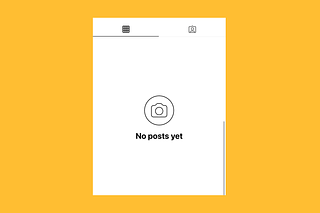

Discover more from One Thing
Kyle Chayka: The American media industry is going through particularly dramatic paroxysms at the moment, most visibly with some of its most heritage brands. Under its new CEO, the Washington Post has just pushed out its previous editor and installed a layer of imported British executives whose mandate seems to be simultaneously pursuing high-priced subscription products on one end and mass, social-media distributed free news on the other. Under its new editor in chief Emma Tucker, another Brit, the Wall Street Journal is laying off impactful reporters in favor of an “audience first” strategy and a voicier, more personality-driven writing style, hoping to attract a younger audience, though the company is already highly profitable. Amidst the lumbering giants, relatively tiny operations like Puck, Punchbowl, Semafor, and Defector target smaller niches of high-value or high-loyalty readers, keeping costs low and drawing revenue from subscriptions, sponsorships, and events. They’re not infinitely scalable, but they don’t have to be. Underneath it all, the threat of generative AI destroying search traffic and replacing journalism’s core purpose of answering mundane factual questions about reality looms like Charybdis.
It all has me thinking about what makes a good media brand in this moment. The biggest companies and publications are struggling because they don’t seem to stand for anything in particular. The Washington Post, for example, has no center of gravity: It’s not great for local journalism; it lost to Politico, Axios, and Punchbowl on high-level national politics; and it axed products that did inspire loyalty, including shutting down its magazine. (It has invested significantly in its Style section, presumably for the high-priced ads, the same reason GQ doubled down on fashion.) Its brand is incoherent, and thus it’s unclear why millions more readers would pay for a digital subscription or go to its homepage. What would fix this problem? Four values have stuck in my head that are as applicable to a single newsletter as to an international newspaper: Voice, taste, trust, and scarcity. For maximum scrollability and to compete with generative AI summaries (I am joking), I’ll blurb them.
Voice
Voice is the tone of the publication as well as of its contributors. There’s a difference in style between the New York Times and the Washington Post, for example: the Post runs longer articles and (IMO) the individual personality of the writer comes through even less. The New Yorker, my employer, has a singular voice built on its longform articles, the structure of its pieces, and its pointedly intellectual outlook (never miss the opportunity for historical references). Writers can also be individually voicey within the institutional voice. The New York Magazine umbrella is killing it on both fronts: You know instantly when you’re reading the latest viral personal essay from The Cut, but you also know you’re getting reliable staff contributors like FOOT Nick Quah.
Readers right now crave voice, to an extreme degree — thus the popularity of newsletters driven by a single writer. This may seem blindingly obvious, but if your articles, or whatever pieces of content you produce, are just like everyone else’s, no one will care about them. Voice is the difference.
Taste
If voice is about the style of content than taste is about the content of content. It’s the sense of what to cover, the curation of subject matter. I’ve always thought that editorial decision-making is the best example of taste, because it happens on a very even playing field these days. Everything from a solo Substack to a newspaper is just a collection of editors and writers using their judgment to pick a subject to pursue and then pursuing it, turning the end result into the best story possible. Sure, an institution has more resources and can fund a long-term investigation, but a single writer can break a news story or a new idea (I think this is most true in what we would call culture coverage). The most interesting things most often happen in niche spaces that are more accessible to individuals than institutions, because institutions have more friction in expressing taste.
General interest might be dead. The largest publications are collections of sub-brands to which consumers develop specific relationships: The Cut, Wirecutter, Politico Playbook. Taste sets these editorial brands apart and allows voice to flourish, because the content doesn’t have to cater to every random consumer online at once.
Trust
Having voice and taste is not enough. You need reliability. Whether you have a YouTube channel or a link-dump newsletter, you need to keep delivering what you promise to deliver. You need to maintain your voice and taste over time, which results in a trusting relationship with the consumer. It’s like a restaurant: You’re only going to become a regular if the food and the service is good every time, if it stays interesting and rewarding to patronize. The publication trusts consumers to understand its context and intention, while the consumer trusts that the publication is delivering something with integrity and coherence.
Trust can be built up in a casual way, delivering quality articles or videos consistently. Or it can be built up in a network way, by being deeply embedded within your industry or niche. The Ankler, a newsletter business, already had plenty of trust by constructing itself around Richard Rush, a veteran Hollywood journalist. As an established insider, what he writes about already matters and shifts the vibes. (The information has to matter.) But you don’t have to start out with those connections; you can build them within your chosen sphere, whether that’s book publishing or indie fashion or international real-estate recommendations.
Scarcity
You need to provide things that other publications or creators aren’t providing. That could mean a breaking-news scoop about the Senate or it could mean identifying a Portuguese shoe brand that no one in the US knows about yet. It could also mean creating an online experience that isn’t available elsewhere, like the NYT’s innovative word games. (Connections as a namebrand will always be exclusive.) In the social-media era, websites and article formats became more generic in order to fit in the templates of feeds and search results. I think in the near future we’ll see more differentiated websites and presentations, not in a scroll-y HTML5 way but the sense of new interactions and bespoke interfaces. My experience of the NYT should be very different than the Washington Post, and not just in the sense of two different iPhone apps. Scarcity is value that someone — consumers and / or advertisers — will pay for. No one else has your style, your editorial outlook, or your relationship with your readers.
These qualities don’t necessarily address monetization, but I think they are easier to monetize in this era than random waves of online attention. They also require taking risks. It’s a risk to be specific, to commit to a voice, to stay smaller, to grow slower. But it’s a much bigger risk to be generic.
Previous media commentary on One Thing:
The internet’s distribution problem: Why digital media companies should want consumers to intentionally seek them out instead of finding them through feeds.
Notes on format: Our editorial strategy for this newsletter, or why a publication should be like a great neighborhood restaurant.
Subscribe to One Thing
A catalogue of authenticity















Loved this analysis—in the same way that the internet has made subcultures into pop culture (witness every fashion, culture, and media consumption "niche" suddenly gaining a massive following on Tiktok), we're now seeing general and generic NEWS slowly edged out in favor of hyper-specialist, highly differentiated/distinctive publications. Idiosyncratic voices (like Blackbird Spyplane within fashion) inspire a more passionate following than carefully measured, neutral ones.
I'm wondering now if it's a reaction to the post-2016 anxiety of political bias in reporting, and the sense that there is no "objective" place to be writing from. In 2024, perhaps we've all accepted that there is no such thing as neutral—and so the highly individual, "biased" voice isn't a weakness but a strength?
And within cultural journalism and criticism, that distrust of neutrality is paired with this feeling that there is SO much content out there, so many commodities, so much we could consume…and we would rather get a recommendation from a friend (an actual friend or a parasocial one) versus an objective ranking. 2024 recommendation culture is more akin to The Strategist (voice-y, highly personable recommendations) than The Wirecutter (self-consciously expert-driven and objective recommendations that barely take aesthetics into account…)
Thank you for a clear and detailed list of things that we’ve always known — it just got lost (hidden?) in the whirlpool of the outer internet. Especially the part of the voice of an editor. Sincerely, ex indie magazine editor & publisher.